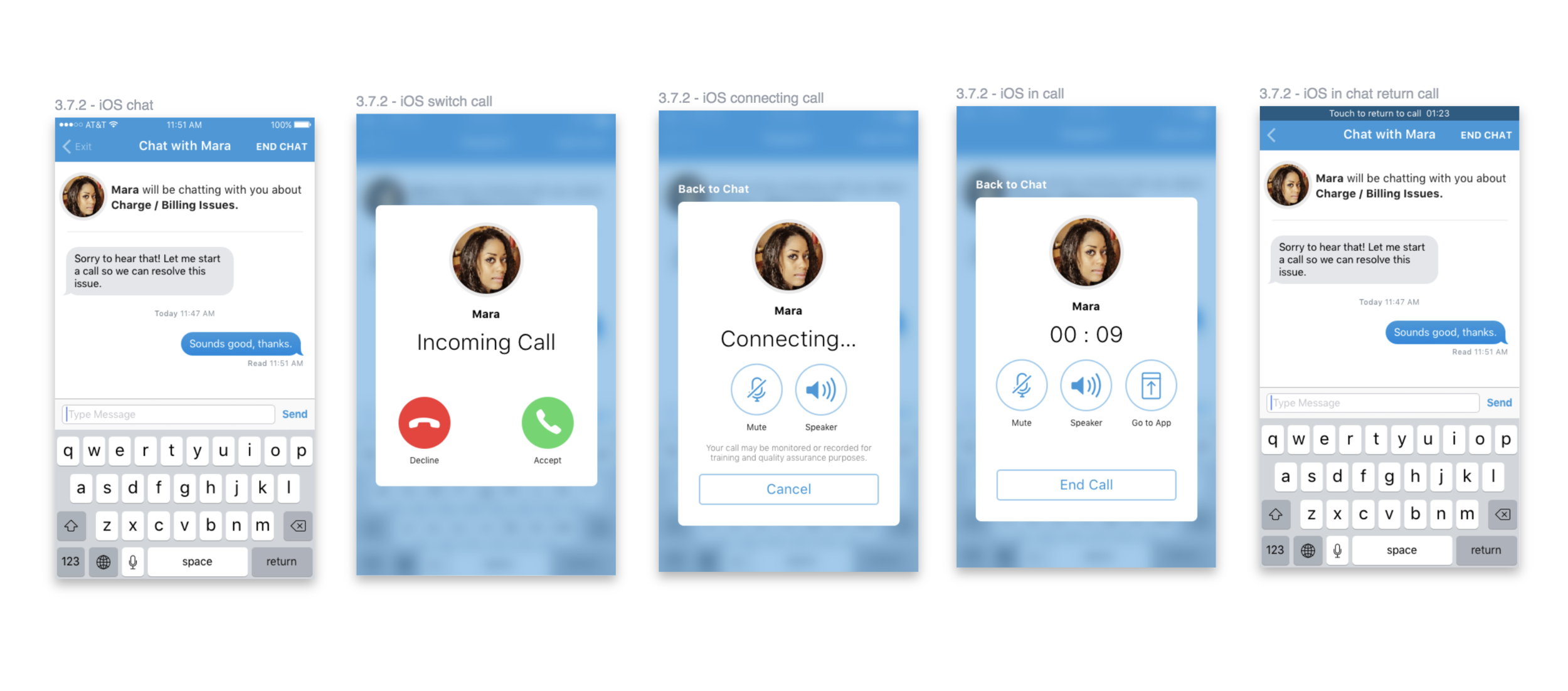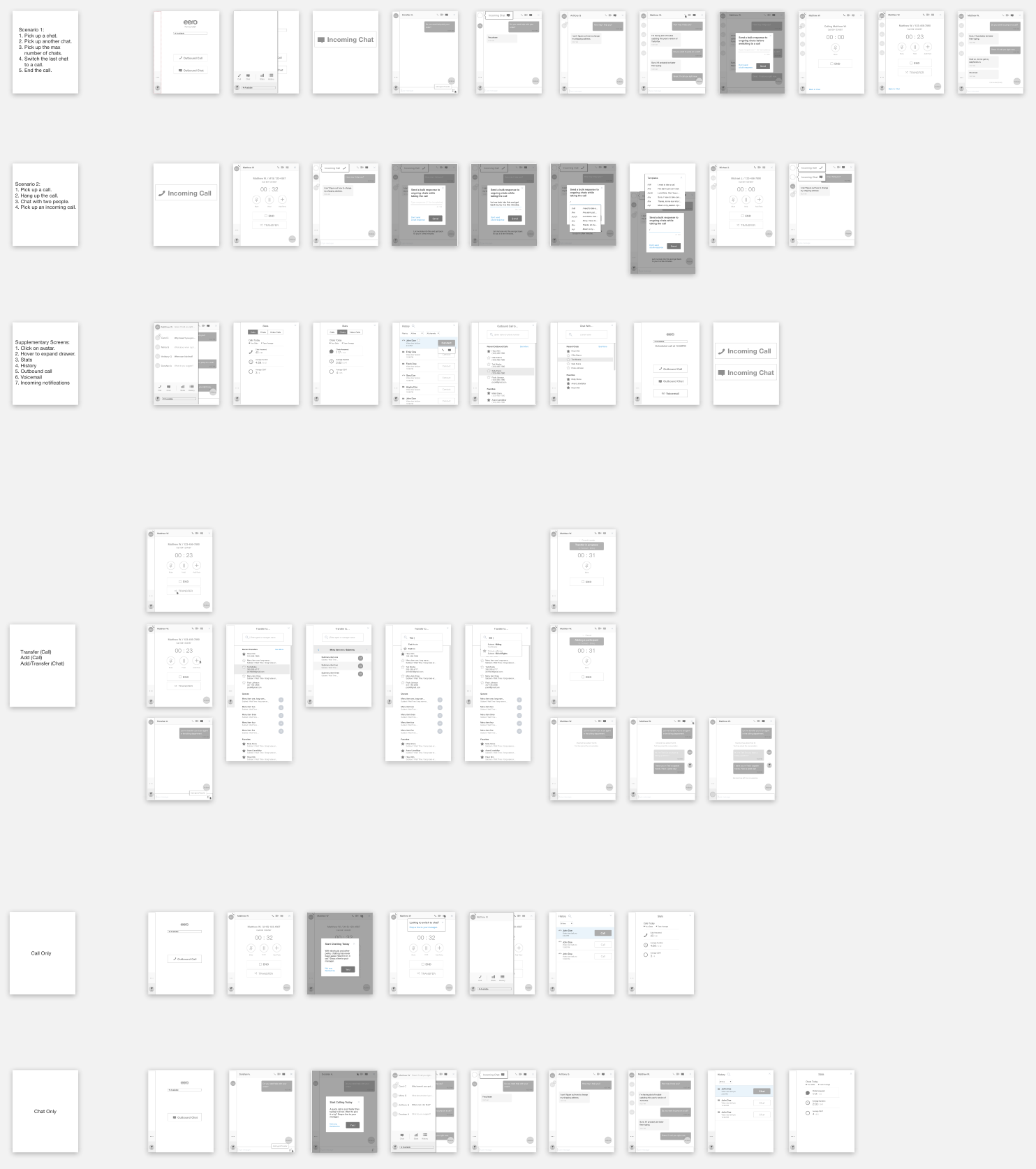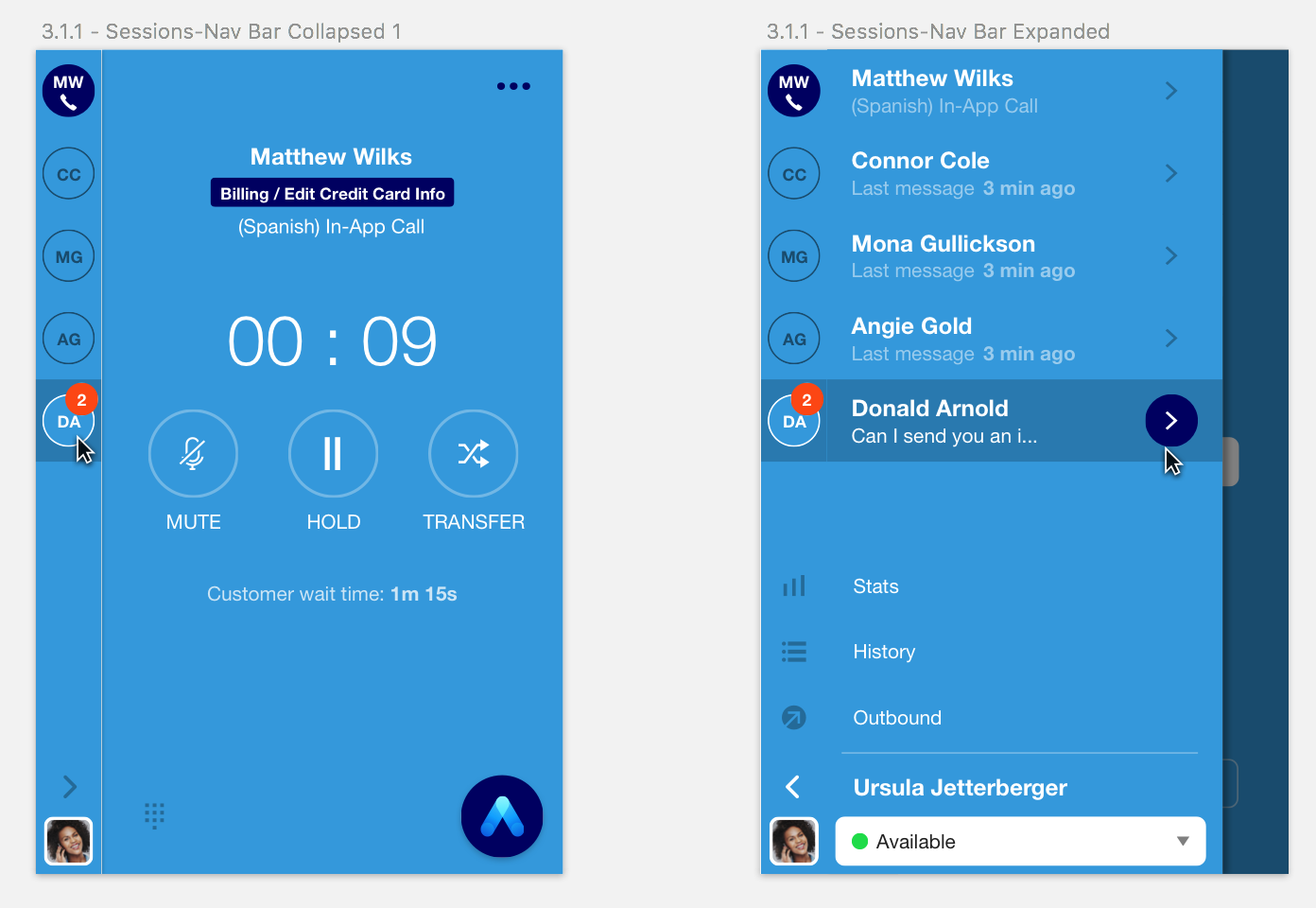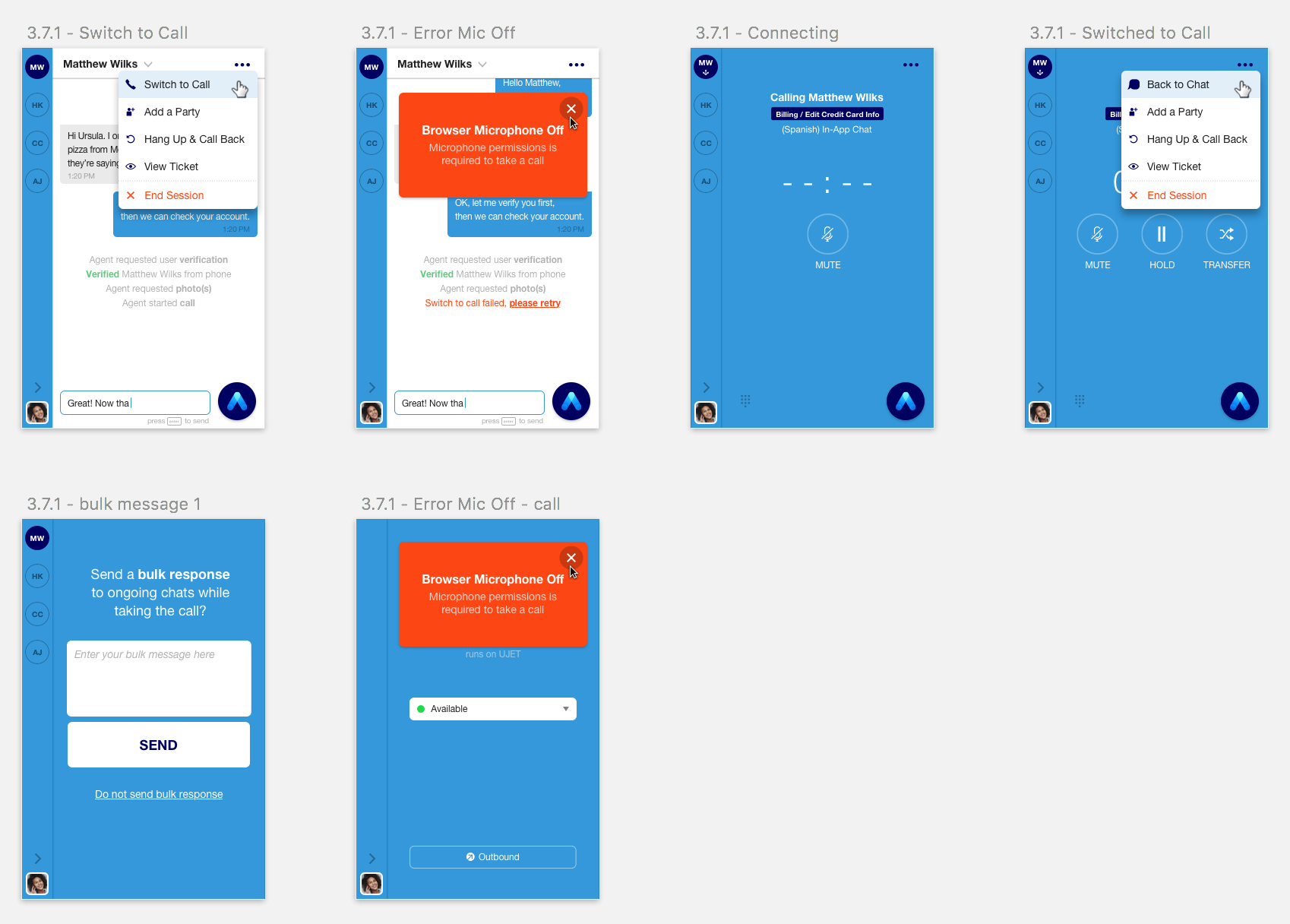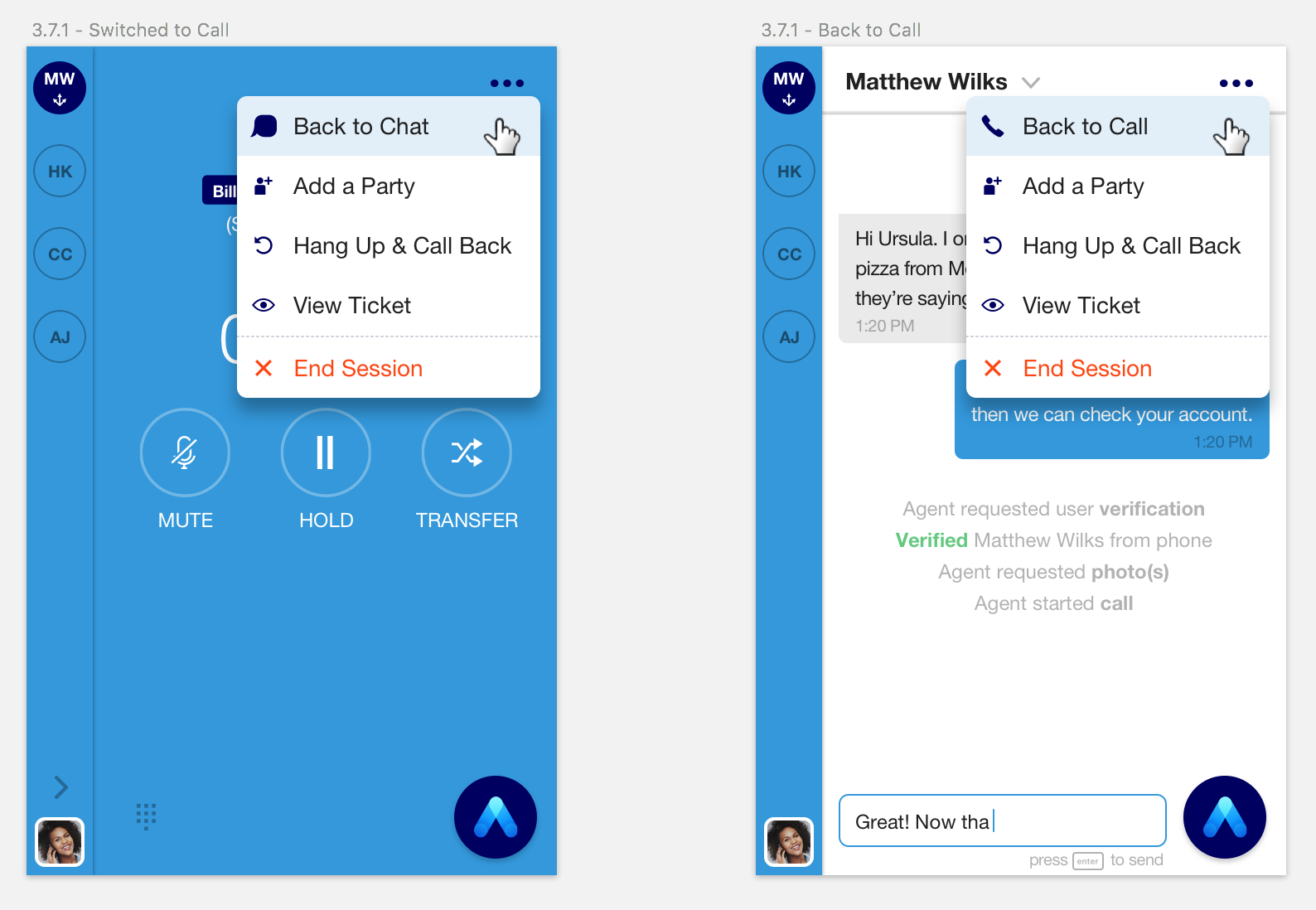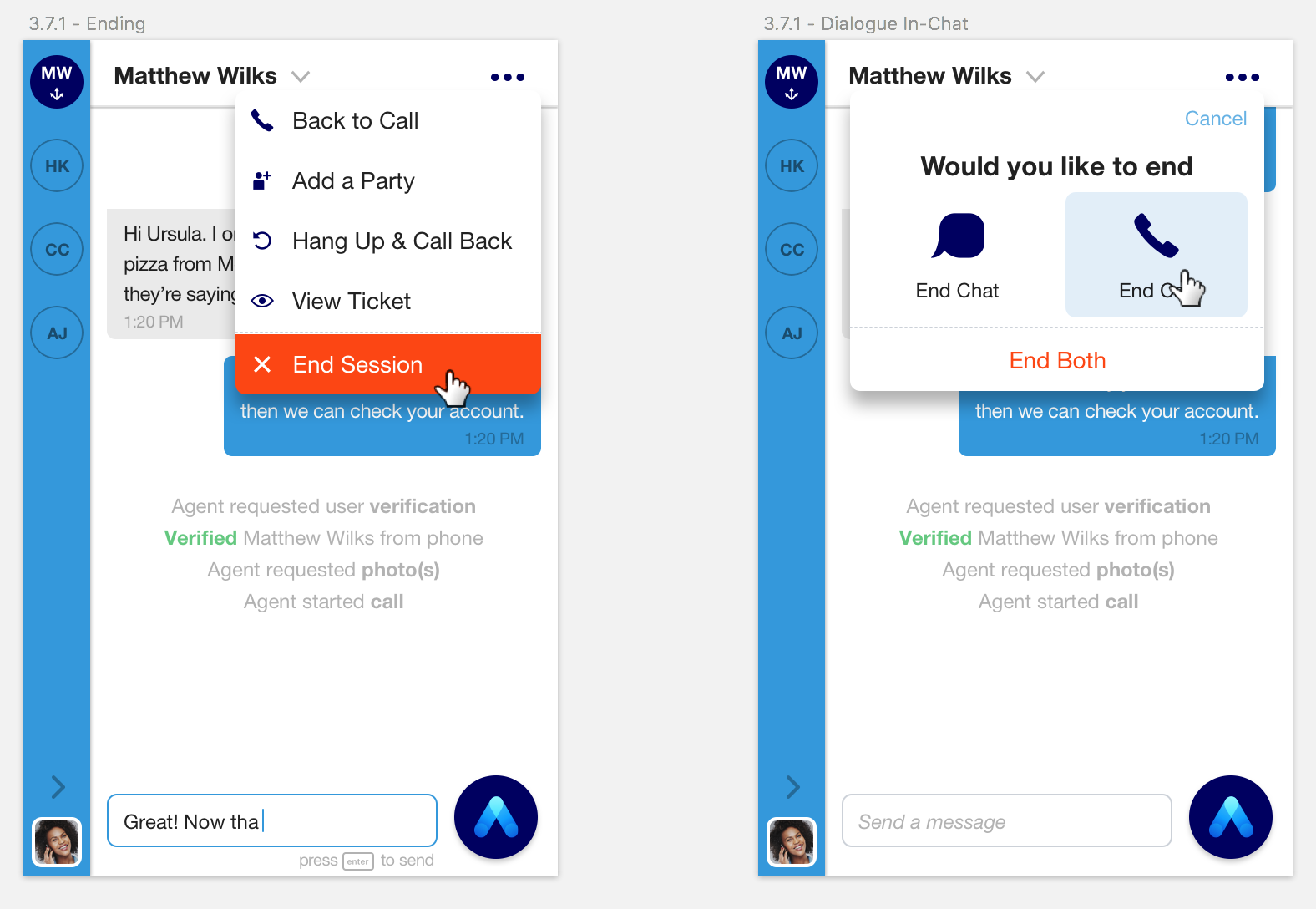UJET Agent Product
Agents using UJET to take customer support calls and chats currently use two products that sit inside of their CRM: a call widget and a chat widget. If they have permission to take both calls and chats, agents sign in separately to the two widgets and switch between the two widgets to continue chat conversations while on a call. Their performance stats are calculated and displayed separately as well.
A product manager, visual designer, and I followed our instincts that the customer support experience can be more holistic for agents and customers alike. We pursued the idea of combining the two widgets into one and introduced the idea of crossing between channels within a session. Just as real life conversations and problem solving require flexibility and adaptability, we foresaw that situations would arise where a chat would need to be converted into a call, a call would need to be converted into a chat, and in the future other channels of communication could be introduced mid session to solve consumers'' issues.
Early on, we thought through the pros and cons for agents, consumers, and (internally) engineers, the business, and design team. We socialized the idea with the leadership team (CEO, CPO, CTO) and received buy in.
The transition to Omnichannel has implications on the agent side, the consumer side, and the admin side in the form of reporting. In designing the experience, I kept the changes for the agent invisible to the consumer while clearly communicating the different transition points to both. I also designed opportunities to gently upsell single-channel Omnichannel subscribers to dual-channel subscriptions.
Skills
Product thinking, ideation, UX design
Impact
The new Omnichannel product is under development and preparing for a beta release in Q2 2018. We anticipate the following benefits to switching to Omnichannel:
Agents will receive a holistic view of the sessions they are currently handling, and their performance. They can be agile in solving customer problems by tapping into the proper channels.
Customers will reach resolution of their issues quicker, unencumbered by the support channel they originally chose.
Engineers and designers will only have one set of assets to manage and integrate into the CRM. New features will be contextualized within one product; features will not lag behind between widgets.
Admins and managers will have a comprehensive view of the productivity of agents in the call center. Reporting will have more meaning. The idea of sessions could lead UJET towards conversation- or contact-centered vision.
Consumer Mobile Designs
iOS designs. If mic permissions are already on, the chat easily converts to a call. The consumer can still move between the call and chat.
UX specs showing the consumer experience when moving between chats and calls. On the agent side, the specs show what happens when consumers don't have the right permissions set, depending on their OS version.
Agent Web Designs (Wireframes)
Agent Web Designs (High Fidelity)
Research & Iteration
I made design decisions around how to surface the channel switching, how to end individual channels and the entire session, and how to make status changing, stats, history, and outbound calls accessible while prioritizing multiple sessions. The product team also broke the experience into phases based on the most likely use cases.
What's Next
When Omnichannel is released under beta, the plan is to test our assumptions and improve on the design of the product.
Next Project:
